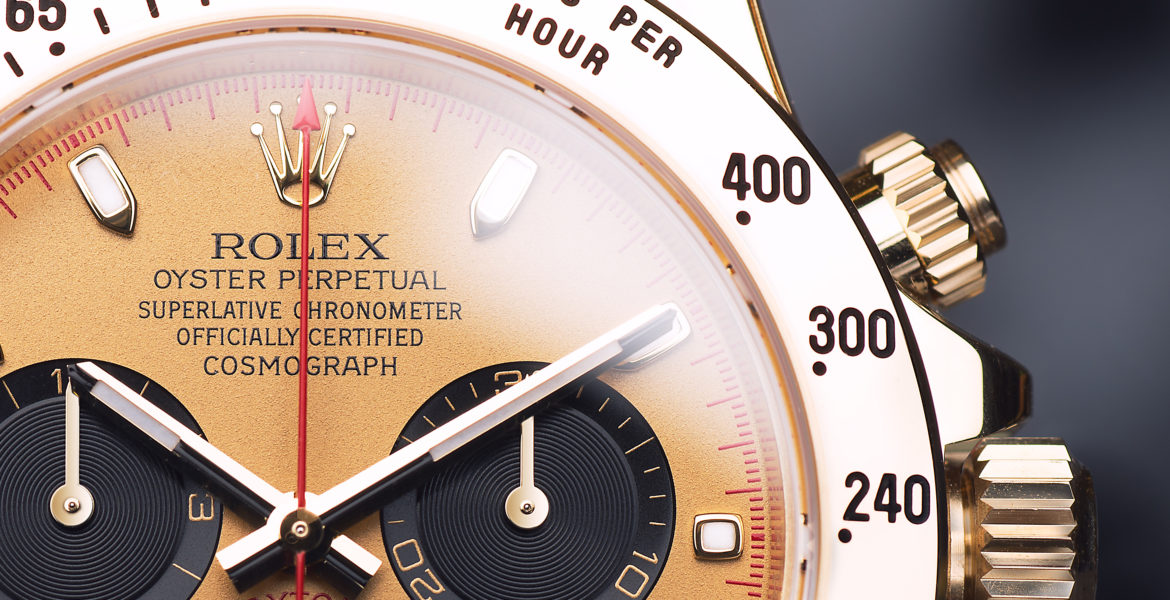Chronograph, cosmograph, chronometer … what do these very similar sounding words mean? The world of horology can be a confusing place, but fear not fellow watch lovers – we are here to quickly and easily clear this question right up! So what is the big difference between a chronograph, a Cosmograph, and a chronometer? Read on to find out.

A timely question: chronometer versus chronograph

Chronograph: a precise timekeeping instrument
So you’ve been freshening up on watch terminology and want to know the main difference between a chronograph, a chronometer, and a Cosmograph? Well, the answer is quite simple.
A chronograph is a watch with a built-in stopwatch feature. Timepieces that incorporate a chronograph mechanism are usually characterised by one or more subdials and one or two pushers in addition to the crown. A chronograph allows its wearer to easily and accurately measure short intervals of time.

Cosmograph: the Rolex way
A Cosmograph is a term that was coined and registered by Rolex in 1953. In 1956, the label was displayed on a complicated Moonphase watch. Initially, Rolex displayed the word “Chronograph” on their chronograph watches but at some point in the 1960s, switched the word out with “Cosmograph”. This can clearly be witnessed in early Daytona models. Although Rolex has never actually addressed the meaning of the term, it is quite evident that it is a modified word that Rolex uses to designate a chronograph watch. Rolex is known for inventing individualised terms to express certain features of their timepieces. Just take the names “Oyster” “Submariner”, and “Perpetual” for example.

Chronometer: high precision standards
A chronometer is a very accurate timepiece thanks to its high-grade movement. These timepieces have been thoroughly tested and certified to meet certain precision standards and thus guarantee a high level of precision. In Switzerland, the Contrôle Officiel Suisse des Chronomètres (COSC) is the organisational body that carries out chronometer testing and certification.
The testing criteria for COSC chronometer testing is based on the measures set out by the International Organisation for Standardisation (ISO). Based on this criteria, a chronometer must be tested for 14 days and among many other benchmarks, meet an average daily rate of -4/+6 seconds.
Interestingly, Rolex is the largest client of COSC with Breitling following in second. Omega began to certify the accuracy and performance of their in-house produced watch movements in 2014 with the help of the Swiss Federal Institute of Metrology (METAS).

